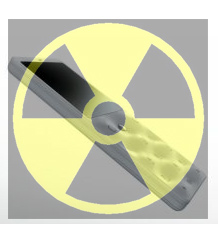 Soon, cell phones may just be able to detect radiation. Researchers at Purdue University are working with the state of Indiana to develop a system that would use a network of cell phones to detect and track radiation. This could help to prevent terrorist attacks with radiological nuclear weapons.
Soon, cell phones may just be able to detect radiation. Researchers at Purdue University are working with the state of Indiana to develop a system that would use a network of cell phones to detect and track radiation. This could help to prevent terrorist attacks with radiological nuclear weapons.
According to physics professor Ephraim Fischbac who is working with Jere Jenkins, director of Purdue’s radiation laboratories within the School of Nuclear Engineering, “It’s the ubiquitous nature of cell phones and other portable electronic devices that give this system its power,” Fischbach said. “It’s meant to be small, cheap and eventually built into laptops, personal digital assistants and cell phones.”
Such a system could fill the nation with millions of cell phones equipped with radiation sensors able to detect even light residues of radioactive material. Because cell phones already contain global positioning locators, the network of phones would serve as a tracking system, said Fischbach.
The system has been developed by Andrew Longman, a consulting instrumentation scientist. He then worked with Purdue researchers to integrate the software with radiation detectors and cell phones. The Cellular data air time was provided by AT&T.
“The likely targets of a potential terrorist attack would be big cities with concentrated populations, and a system like this would make it very difficult for someone to go undetected with a radiological dirty bomb in such an area. The more people are walking around with cell phones and PDAs, the easier it would be to detect and catch the perpetrator. We are asking the public to push for this.”
Tiny solid-state radiation sensors are commercially available. The detection system would require additional circuitry and would not add significant bulk to portable electronic products, said Fischbach.
Fischbach said the sensors don’t perform the detection task individually.
“The collective action of the sensors, combined with the software analysis, detects the source,” he said. “The system would transmit signals to a data center, and the data center would transmit information to authorities without alerting the person carrying the phone.
“Say a car is transporting radioactive material for a bomb. … As the car passes people, their cell phones individually would send signals to a command center, allowing authorities to track the source.”
